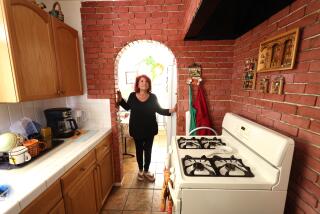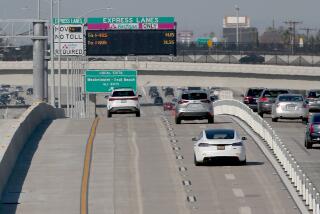To End the Freeway War, Seek an Alternate Route
- Share via
It wasn’t even 8 o’clock in the morning and there we all sat, going nowhere, so steamed that the crossroads of Fremont and Main must have shown up as a hot spot on the weather bureau’s sensors.
What gets a Southern Californian so riled up so early in the day? Tax cuts? Osama bin Laden?
Really, now, how many guesses do you need? This is important--this is about a freeway.
In commuter prime-time in Alhambra, our cars were inching toward a light deliberately re-engineered to stay green for all of seven seconds. It was like waiting two hours for a five-minute Disneyland ride; it was like fighting at the Somme--six months of battle to gain six inches of mud.
In the last 10 days of the long war of wills between South Pasadena and Alhambra over grafting a final 6.2 miles onto the Long Beach Freeway, Alhambra has upped the ante. First came barricades shunting traffic off its streets, and now this seven-second green light.
It is, says Alhambra’s mayor blandly, about reducing traffic in Alhambra. It is not, he says, “a childish payback, or a pissing match,” which is of course exactly what it is, and hardly surprising that after frustrating courtroom fights, a city would turn to street fights. But it turns out they’ve been doing it into the wind.
If Alhambra wanted commuters to connect their traffic woes to the unfinished freeway, its City Council should have been out at 6 a.m., handing out fliers: “Ticked off? Blame South Pasadena. Build the 710 Freeway.”
Instead, by week’s end, something else was happening:
Caltrans found that, after a few days of nasty gridlock, commuters have begun exhibiting the same resilience and ingenuity they showed after the Santa Monica Freeway cracked like a stick of kindling in the Northridge quake: They’re finding other ways of getting where they need to go.
*
*
Tourists might choose the Hollywood sign, but we who live here know our defining motif is the freeway. Premiered here with the Arroyo Seco Parkway, the freeway was perfected here too--broad, swift and high, democratically accessible to every part of town, yet efficiently aloof from them all.
Yet the freeway’s appeal is also its poison. We speed past and above our own city, a hundred yards from our fellows, but as removed from them as if we were airborne.
Some, like the Santa Monica Freeway, look to have been laid out by pencil and ruler. In the 1950s and ‘60s, it blasted across town like a brigade of tanks, as the Century Freeway would later do, dismembering cozy enclaves, proving that a freeway can bust up nearby neighborhoods even as it links up far-flung ones.
The social critic Reyner Banham wrote that “wherever a freeway crosses one of the more desirable residential areas of the plains . . . it seems to produce a shift in land values” and the cheapest, densest of apartment construction that destroys “the illusions of homestead living.”
And like the freeway, homestead living is so much the ideal that a California bungalow, not a California grizzly bear, should adorn the state flag. At least the former, unlike the latter, isn’t extinct here.
Which brings us back to South Pasadena, already “bungalow heaven” when the motorcar was still a curiosity, and where the last length of L.A.’s last freeway would cut a few minutes off a commute--and cut a town in two.
*
*
Barely half of the freeways sketched out on Caltrans’ wish-list map were ever built. There is no Malibu Freeway, no Reseda Freeway, no Beverly Hills Freeway--more about that in a moment.
South Pasadena’s half-century-long battle against the 710 extension has successively and not always accurately been dismissed as rich vs. poor and white vs. brown.
In contrast, it took the Westside only a decade or so to kill any talk of a Beverly Hills Freeway. Century City was developed on the expectation that the Beverly Hills Freeway would be built, and yet it has flourished without it. So too has Westside traffic, and the same kind of complaints that traffic generates in Alhambra.
This week, our urban masters unveiled a plan showing what money ($68 million), clout and ingenuity (years of meeting and planning) can accomplish:
A massive make-over will unite Santa Monica and Little Santa Monica boulevards between the San Diego Freeway and Beverly Hills. The new super-boulevard, a parkway graced with jacaranda trees and bike paths, will speed traffic along the same route originally intended for the Beverly Hills Freeway.
Do the same concerns on the east side of town, rich or poor, brown or white, deserve any less consideration and imagination?
Patt Morrison’s column appears Fridays. Her e-mail address is [email protected].
More to Read
Sign up for Essential California
The most important California stories and recommendations in your inbox every morning.
You may occasionally receive promotional content from the Los Angeles Times.











